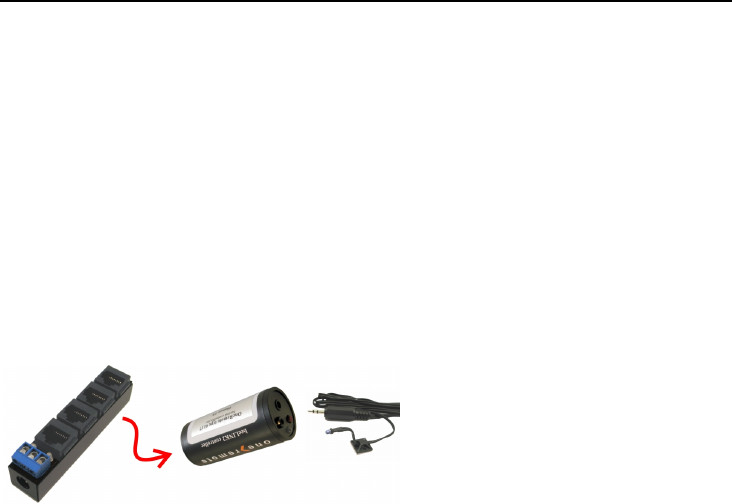
The BeeLINK bus is a parallel bus type. Passive splitters therefore can be used, to make a
network of any shape. If many controllers or very long cables are used, it might be
necessary to place one more or more power supplies, placed closer to the controllers that
lack power.
Using this parallel structure each BeeLINK controller receives the IR-data at the same
time. Every controller has its own microcomputer, living its own life.
Although some of the controllers can ‘talk’ to each other, most controllers operate fully on
their own.
BeeLINK2 – installation
The BeeLINK2 controller gets its power supply and control data, via the CAT5 cable
from a BeeLINK amplifier.
Once connected to the BeeBus the BeeLINK2 controller only needs an IR-emitter to
operate the TV. The IR-emitter emits the same IR data as the TVs own remote control.
Emitted IR data is in fact light at a frequency just out of the spectrum that the human eye is able to see.
It is short flashes of light, a bit like when sending morse codes using a flashlight.
The emitter must be stuck on the TV, nearby the TVs IR-receiver. It must be placed so the
IR receiver in the TV is able to see the emitted light from the IR-emitter.
The IR-emitter can be placed inside the TV, if you want to avoid having it on the outside,
as long as the IR-receiver is able to see the light from the emitter.
A BeeLINK2 controller connects to the
BeeBUS via a CAT5 cable, for power supply
and control data.
A IR-emitter sends the commands to the TV.
The BeeLINK2 controller can be placed by the TV or in another room. IR emitters are
available in lengths of 1, 5 and 10 meters. In addition extension cords can be used. An IR-
emitter can be extended to more than 30 meters.
The BeeBUS CAT5 cable can be more than 75 meters.














